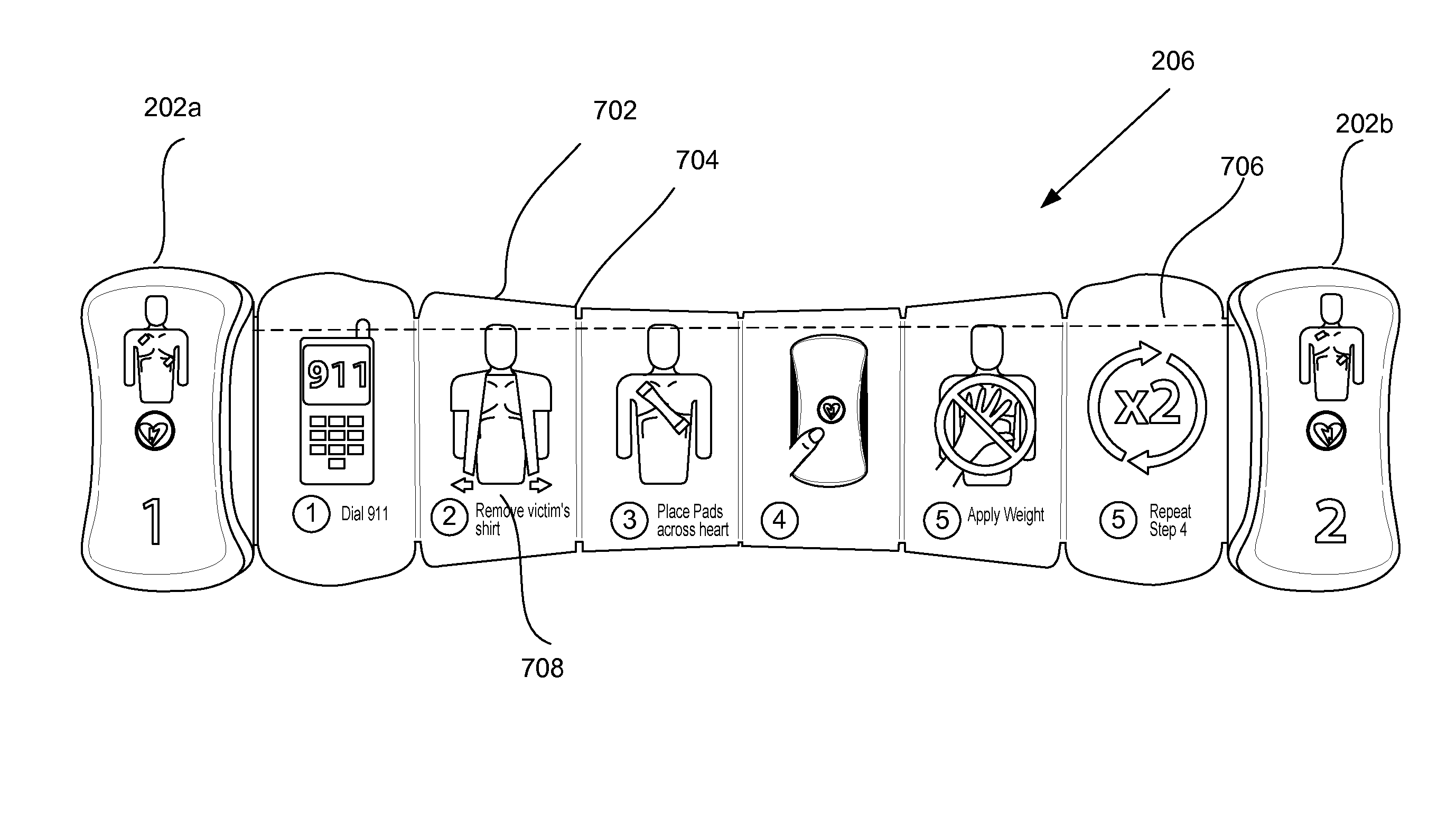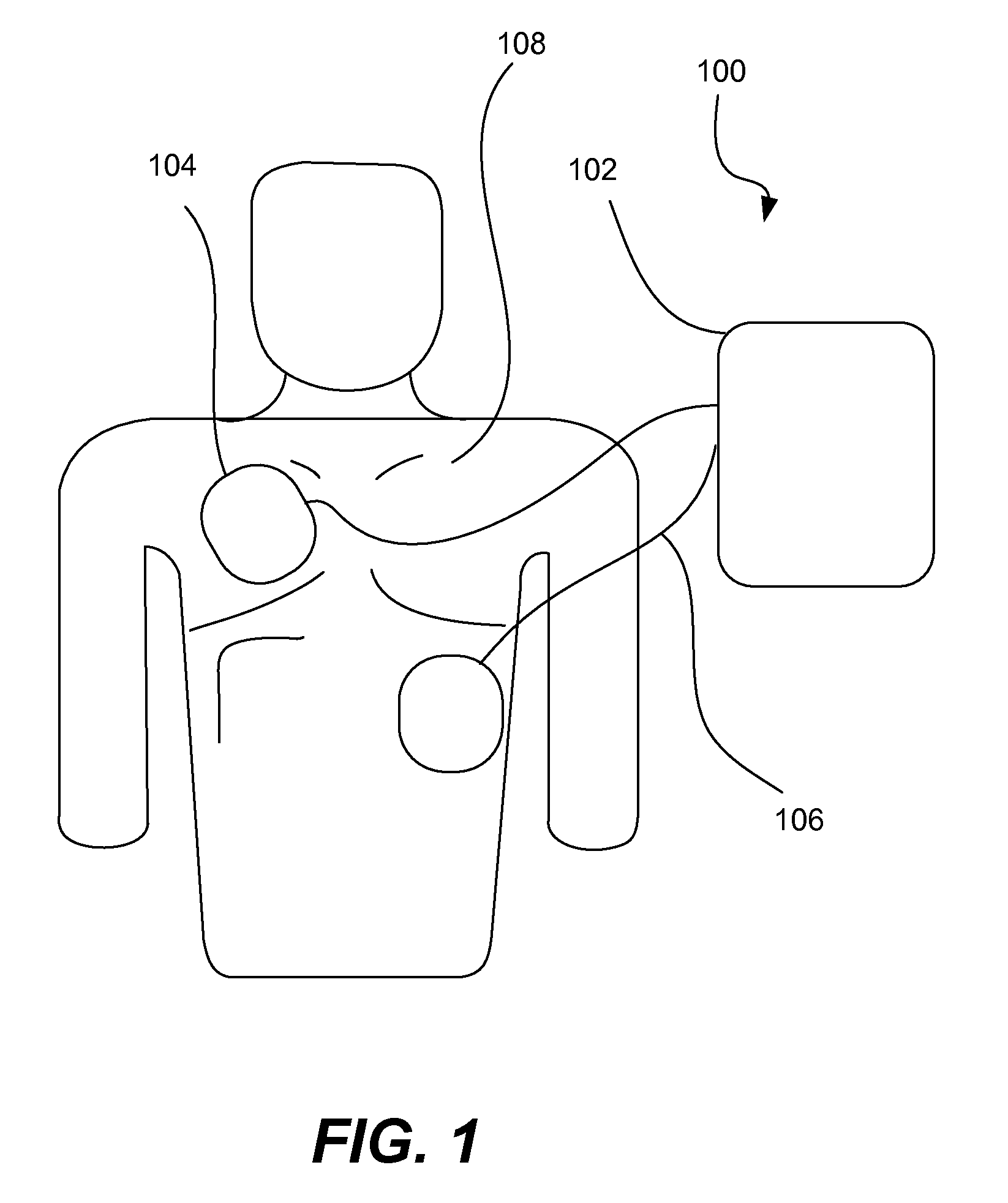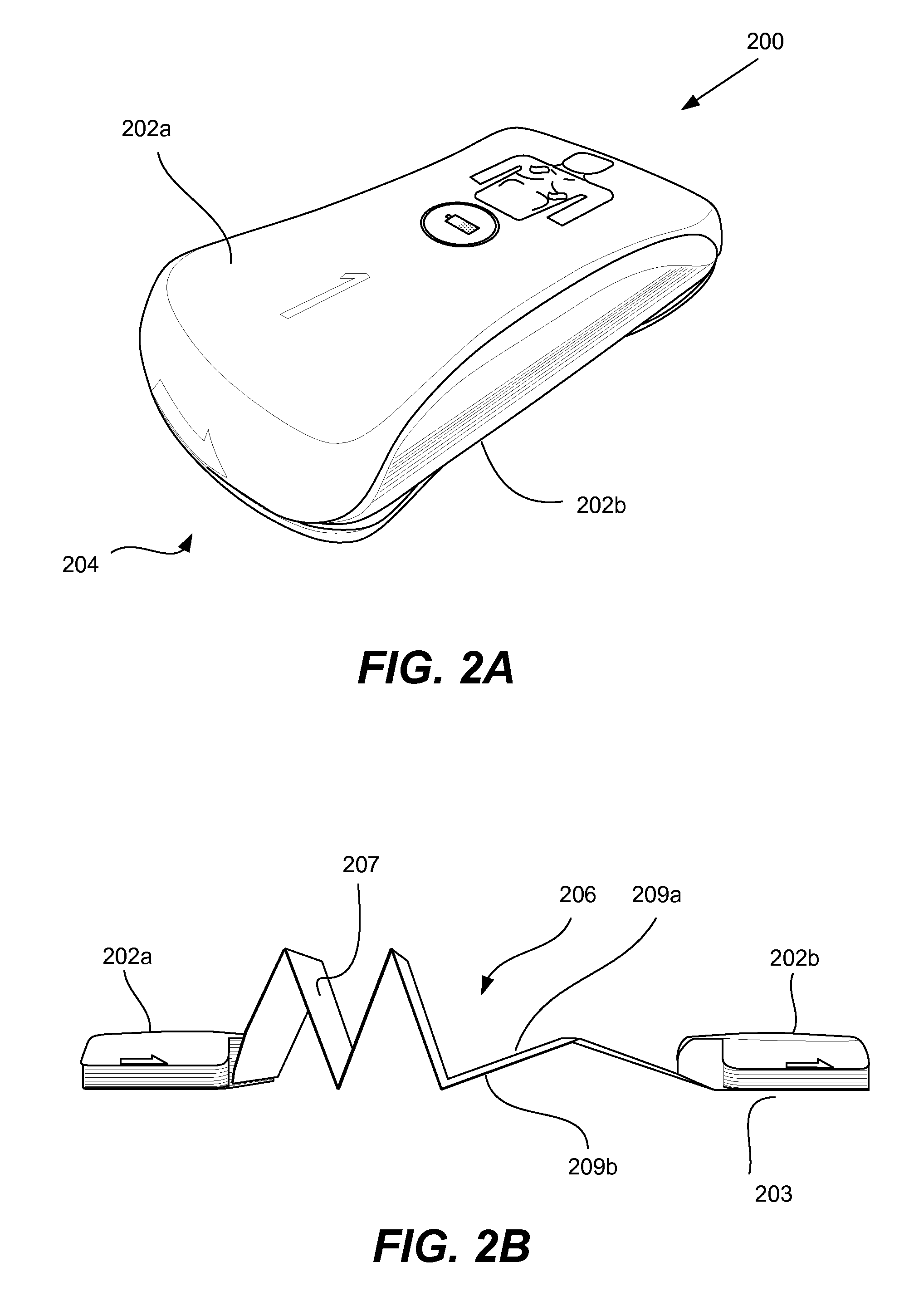External defibrillator
a defibrillator and external technology, applied in the field of external defibrillators, can solve the problems of deprived brain and other critical organs of nutrients and oxygen, inhibit blood circulation, etc., and achieve the effect of improving portability, accessibility and performance of a defibrillator
- Summary
- Abstract
- Description
- Claims
- Application Information
AI Technical Summary
Benefits of technology
Problems solved by technology
Method used
Image
Examples
Embodiment Construction
[0039]The present invention relates generally to methods and arrangement for arresting a cardiac arrhythmia using an external defibrillator. Some aspects of the invention relate to defibrillators with various types of arrangements, connecting structures, and electrodes.
[0040]The steady circulation of blood is crucial to the proper functioning of the human body. The circulation of blood is governed by the heart, whose expansion and contraction is in turn controlled by a regular pattern of electrical impulses. When this pattern of electrical impulses becomes chaotic or overly rapid, a sudden cardiac arrest may take place. Tragically, the victim typically collapses and dies unless he or she receives proper medical attention.
[0041]The most successful therapy for sudden cardiac arrest is prompt and appropriate defibrillation. A defibrillator uses electrical shocks to restore the proper functioning of the heart. A crucial component of the success or failure of defibrillation, however, is ...
PUM
 Login to View More
Login to View More Abstract
Description
Claims
Application Information
 Login to View More
Login to View More - R&D
- Intellectual Property
- Life Sciences
- Materials
- Tech Scout
- Unparalleled Data Quality
- Higher Quality Content
- 60% Fewer Hallucinations
Browse by: Latest US Patents, China's latest patents, Technical Efficacy Thesaurus, Application Domain, Technology Topic, Popular Technical Reports.
© 2025 PatSnap. All rights reserved.Legal|Privacy policy|Modern Slavery Act Transparency Statement|Sitemap|About US| Contact US: help@patsnap.com



